If you want to foster perfect parent-teacher coordination, a student behavior email template is a game changer. Start with a clear subject line to grab attention, including the student's name and the specific behavior issue. Then, write a warm greeting and clearly describe the behavior, providing examples and detailing your actions as a teacher. Don't forget to invite parents for a meeting, encouraging open dialogue. This approach enhances engagement and trust, leading to effective collaboration. It's essential to avoid common pitfalls like vague details or an unprofessional tone. Discover more strategies that can help you enhance this communication! Additionally, maintaining a positive and solution-focused tone throughout the email fosters a collaborative atmosphere, ensuring parents feel supported rather than singled out. By using an email to teacher template or creating your own structured outline, you can streamline the process and improve clarity in your communication. This consistency not only saves time but also sets the stage for constructive conversations that prioritize the student’s well-being and growth.
Key Takeaways
- Use a clear subject line that includes the student's name and specific behavior issue to enhance email recognition.
- Start the email with a warm greeting, establishing a positive tone for the communication.
- Provide specific examples of the behavior issues and detail the actions taken to address them.
- Include a meeting invitation to encourage open dialogue and parental feedback for collaborative solutions.
- Maintain a professional tone and avoid casual language to emphasize the importance of the discussion.
Introduction
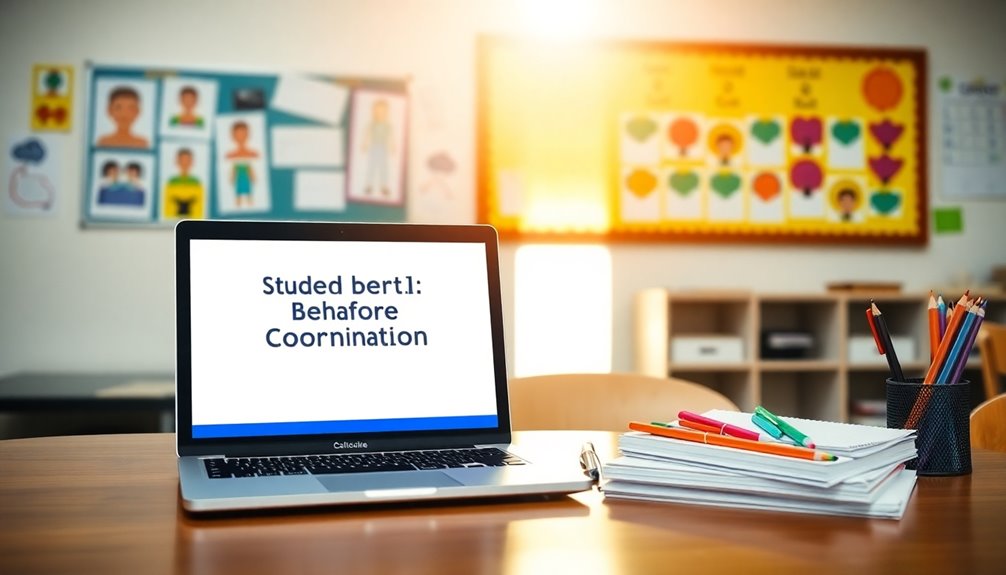
Effective communication is crucial when it comes to addressing student behavior issues. A Student Behavior Email Template serves as a powerful tool for ensuring clear communication between teachers and parents. By utilizing this template, you can maintain a professional tone, which is essential for discussing sensitive topics related to behavior management.
With its structured format, the template allows you to convey messages consistently and effectively. You'll find it easier to detail specific incidents, the actions taken, and any necessary follow-up. Including specific details like the student's name and the behavior issue at hand promotes clarity and minimizes misunderstandings.
This approach not only strengthens the relationship between teachers and parents but also fosters a collaborative environment focused on student behavior. When parents are engaged and informed, they can better support their child's development and learning.
Ultimately, using a Student Behavior Email Template can lead to improved student behavior and, consequently, enhanced academic performance. By committing to this structured communication method, you set the stage for positive interactions and outcomes that benefit everyone involved.
Enhances Parent Engagement Efforts
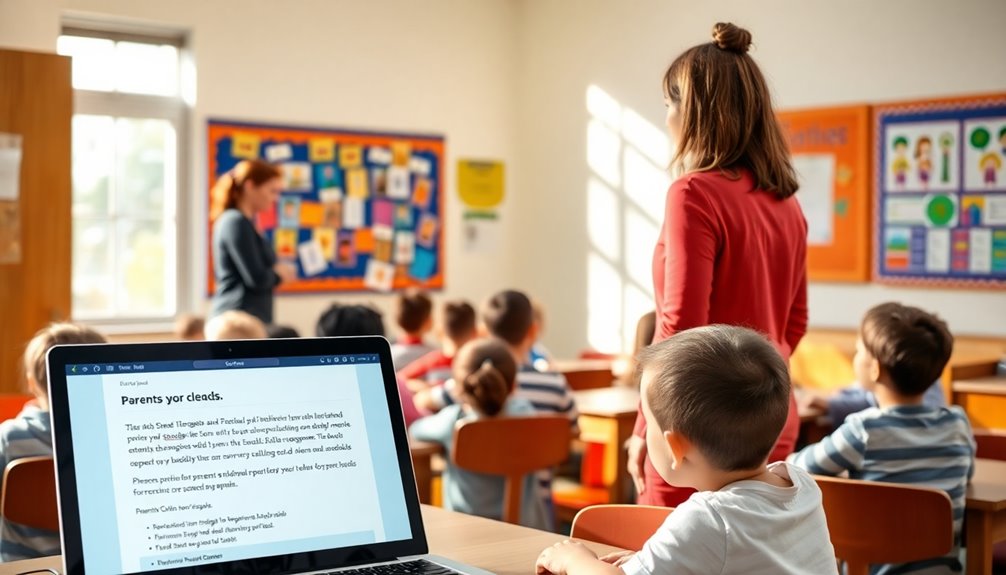
By using a structured email template, you can significantly boost parent engagement in addressing student behavior issues. These templates provide clear messaging that encourages parents to participate actively in their child's development. When you communicate consistently through these templates, parents feel informed and empowered, fostering a proactive approach to student welfare.
With email templates, you not only save time but also enhance personalized interactions with parents. This leads to stronger relationships built on trust and respect, creating a collaborative atmosphere. By sharing detailed insights into behavior incidents and suggesting strategies for improvement, you equip parents with the tools they need to support their child's progress at home.
Furthermore, clear and respectful communication helps reduce misunderstandings and anxiety for both teachers and parents. This transparency ultimately contributes to a positive school environment where everyone feels valued and understood.
Clear Subject Line
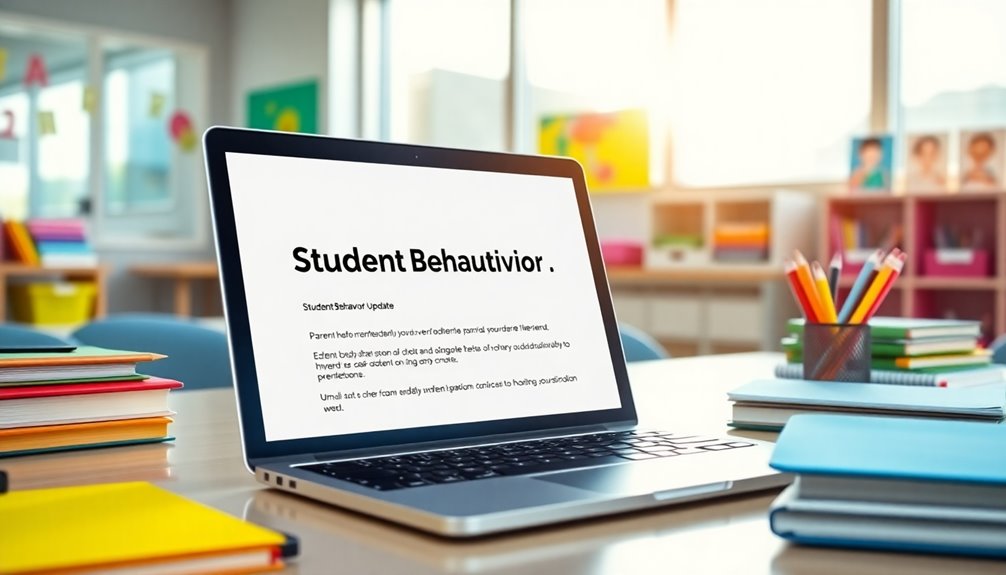
A clear subject line is vital for ensuring parents grasp the purpose of your email at a glance. When you send a student behavior email, including the student's name and a brief description of the behavior issue is key. This approach enhances clarity and makes it easy for parents to identify the email quickly, which is essential for effective communication.
The subject line importance can't be overstated. A well-crafted subject line not only sets a professional tone but also signals to parents the significance of the communication. Research shows that emails with specific, concise subject lines are more likely to be opened and read, directly improving parent engagement in discussions about student behavior.
Step-by-Step Email Writing Process

When writing an email about student behavior, it's crucial to follow a clear step-by-step process that ensures your message is both effective and approachable.
Start with a personalized subject line that includes the student's name. This helps the parents immediately identify the email's purpose.
Next, greet the parents warmly and describe the specific behavior issue in a straightforward manner. Use clear examples to provide context and illustrate the situation effectively. This transparency builds trust in your communication.
Following that, detail the actions you've taken as a teacher to address the behavior. Show your proactive approach by explaining the strategies implemented and how they aim to support the student's development.
Don't forget to include a meeting invitation. Encourage parents to share their thoughts or discuss the matter further, fostering open communication and partnership.
Conclude your email with a respectful tone, reiterating your commitment to supporting the student and maintaining a positive relationship with the parents.
This collaborative spirit is essential for effective parent-teacher coordination, ensuring everyone is on the same page in addressing the student's needs.
Pro Tips for Maximizing Impact
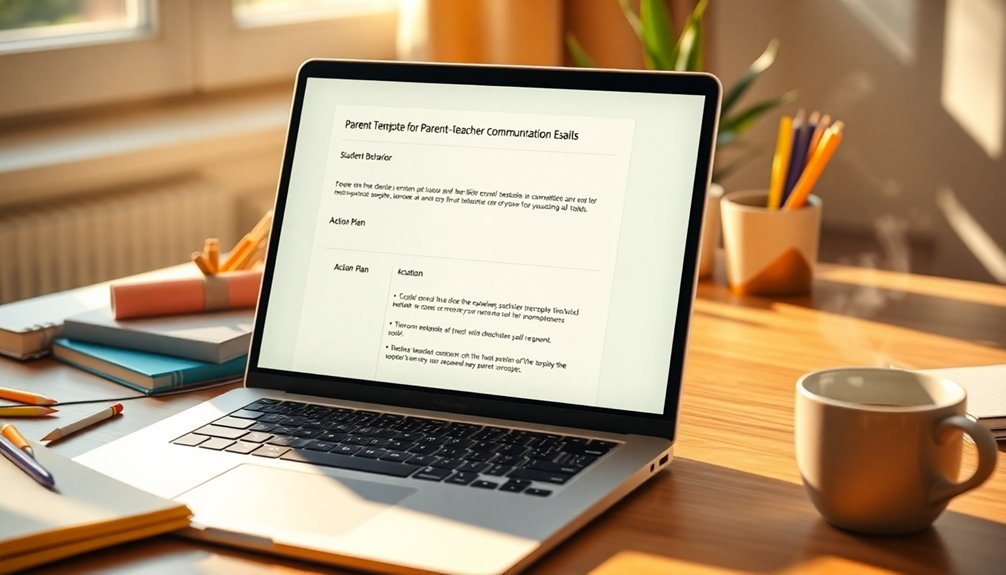
Maximizing the impact of your communication about student behavior requires thoughtful strategies that enhance understanding and collaboration.
Start by utilizing clear and concise language in your email template, ensuring parents can easily grasp the specific issue at hand. Personalizing the email with the student's name and detailing specific incidents fosters a connection and shows your attention to detail.
Maintaining a respectful and professional tone throughout your message; this helps in nurturing a positive relationship with parents and encourages their willingness to collaborate on behavior improvement. Visualization techniques can also be beneficial in helping students improve their focus and behavior in class.
It's vital to incorporate current classroom policies into your email to ensure relevance and effectiveness in your communication.
Don't forget to include a call to action, inviting parents to discuss the matter further. This step encourages ongoing communication and promotes partnership in addressing behavior issues. Additionally, consider suggesting effective relaxation techniques to help students manage stress, as they can contribute positively to behavior improvement.
Common Mistakes to Avoid

Effective communication about student behavior can easily fall prey to common mistakes that undermine its impact. One key error is failing to include specific details about the behavior issue. Always clarify the context and outline any actions taken to avoid misunderstandings.
Additionally, using a casual or unprofessional tone can diminish the seriousness of your message. It's vital to maintain a formal tone that reflects professionalism and respect.
Another mistake is neglecting to invite parental feedback. Encouraging open dialogue fosters collaboration and strengthens relationships. Without this, you risk isolating parents from the process that addresses their child's specific needs.
Also, don't forget to include a clear subject line summarizing your email's purpose; this helps ensure your communication isn't overlooked.
Lastly, always review your email for clarity and professionalism before hitting send. Errors or ambiguity can lead to confusion, so double-check for accuracy and completeness.
Behavior Email Template Sample

A well-crafted behavior email template serves as a vital tool for teachers to communicate behavioral concerns to parents. This template helps ensure clarity and professionalism in your message, making it easier to address specific issues regarding a student.
Here's a sample structure you might consider:
—
Subject: Behavioral Concern for [Student’s Name]
Dear [Parent’s Name],
I hope this message finds you well. I'm reaching out to discuss [Student’s Name]'s recent behavior in class. On [specific date], [he/she/they] exhibited [describe specific behavior issue], which doesn't align with our classroom expectations. Understanding emotional dysregulation can play a significant role in a child's behavior. It's essential for parents to be involved in children's lives to provide the necessary support during such challenges.
To address this, I've taken the following steps: [list actions taken, such as a one-on-one discussion or implementing a behavior plan].
I believe a proactive approach is essential for [Student’s Name]'s development, and I'd appreciate your collaboration in this matter.
Please let me know a convenient time for us to discuss this further. Your support is invaluable for fostering [Student’s Name]'s success.
Thank you for your attention.
Best regards,
[Your Name][Your Position][School Name]—
Using this behavior email template can enhance communication and strengthen the partnership between you and the parents, ultimately benefiting the student.
Final Thoughts
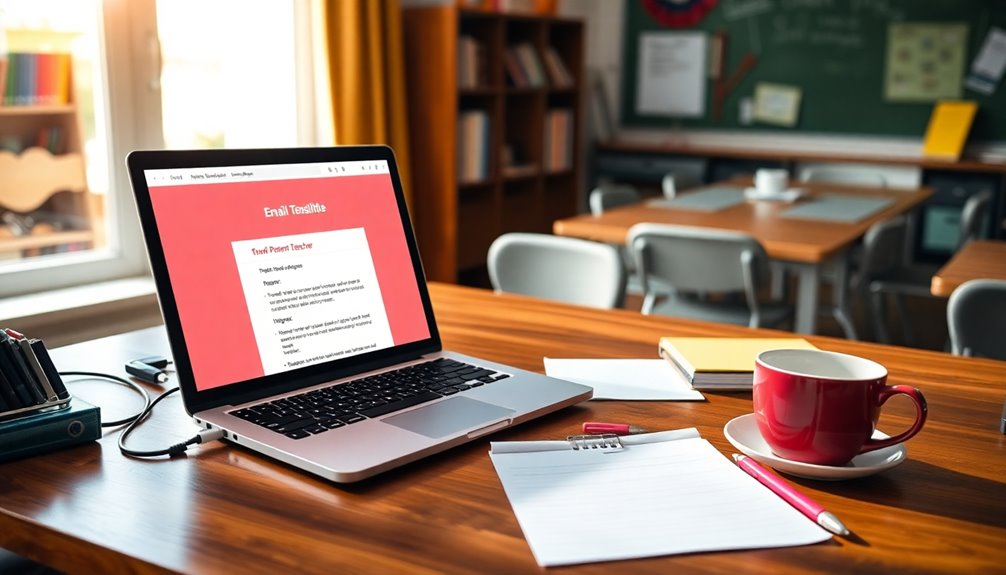
Teachers' communication with parents about student behavior is essential for fostering a supportive learning environment. By utilizing email templates, you can streamline your communication, ensuring effective communication that saves time while maintaining consistent messaging.
A well-structured email should include specific details about the student's actions and the steps you've taken to address them. This clarity helps parents understand the context and encourages their involvement.
Maintaining a respectful tone in your emails enhances parent engagement and minimizes misunderstandings. When you provide regular updates, you promote an open dialogue, encouraging parents to share their insights and concerns.
This collaborative environment is crucial for the student's overall development, as it allows for shared strategies and support systems. Emotional intelligence is a key trait that can help parents understand their child's behavior better.
Encouraging parent-teacher coordination through these methods not only addresses immediate behavioral issues but also lays the groundwork for long-term success.
By being proactive in your communication, you create a foundation of trust and partnership that benefits students. Remember, effective communication about student behavior isn't just about addressing problems; it's about working together to foster a positive and productive learning experience.
Keep these principles in mind, and you'll enhance both your students' success and your relationships with parents.
Frequently Asked Questions
How Do I Write an Email About Student Behavior?
To write an email about student behavior, start with a clear subject line. Detail specific issues, explain your actions, and invite parents to collaborate. Keep a respectful tone, focusing on the student's growth and well-being.
What to Say in an Email to a Parent About Their Child's Behavior?
You should clearly outline specific behaviors observed, provide examples, and explain the steps you've taken to support their child. Invite parents to share their observations and suggest a meeting for further discussion. Maintain a respectful tone.
What Is an Example of Letter to Parent About Student Behavior?
When addressing a student's behavior, you could write: "Dear Parent, I'm writing to discuss [Student’s Name]'s recent behavior on [Date]. We noticed [specific behavior] and are implementing strategies to help. Let's talk further about this."
How Do You Write a Letter to a Teacher About Your Child's Behavior?
To write a letter to a teacher about your child's behavior, start with a respectful greeting, state your concerns clearly, provide specific examples, and suggest a meeting to discuss collaborative strategies for improvement.
Natali – Editor in Chief (Strategy and Mastery, AI Expert) Natali, our Editor in Chief, is the driving force behind our content’s strategic direction. With a keen eye for detail and a deep understanding of market trends, Natali ensures that our content is top-notch and strategically aligned with our client’s goals. Her expertise in AI helps to seamlessly integrate advanced technology into our marketing strategies, pushing the boundaries of conventional marketing.
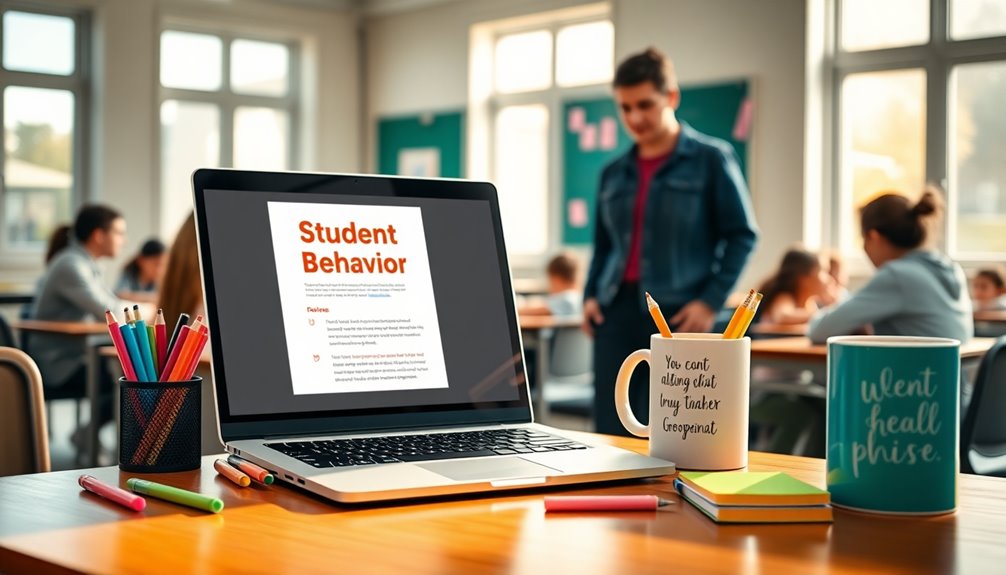



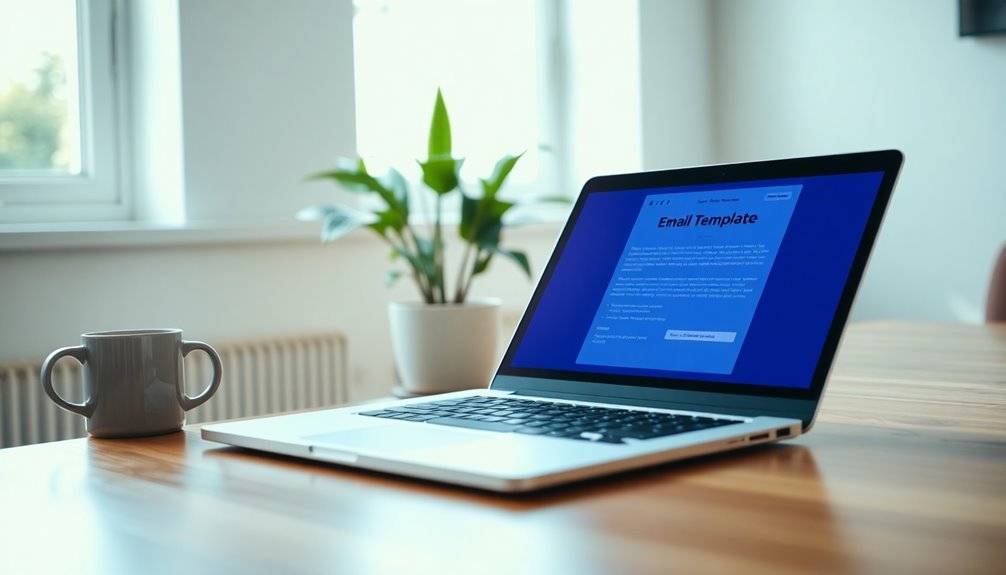




![Personalization Basics: Beyond "Hello [Name]" in Your Emails 27 advanced email personalization techniques](https://leftbrainmarketing.net/wp-content/uploads/2025/11/advanced_email_personalization_techniques_7bop8-260x140.jpg)
